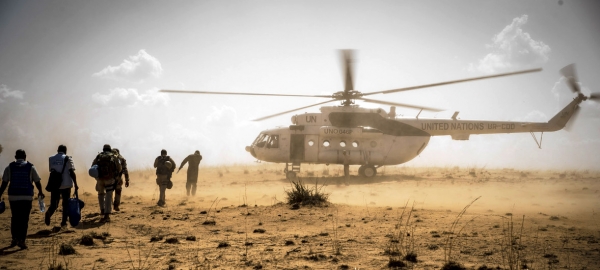The Center for Civilians in Conflict (CIVIC) is an international organisation whose aim is to promote the protection of civilians by developing and implementing solutions to prevent, mitigate and respond to civilian harm. On 6 May 2020, the Center released a report entitled «Protecting Civilians in Mali: Why Air Assets Matter for MINUSMA » to analytically show the wide range of tasks that the United Nations’ Multidimensional Integrated Stabilization Mission in Mali (MINUSMA) is asked to perform and how the lack of military air assets is critical, as they are fundamental to accomplish the objectives of the United Nation (UN) Mission in Mali.
CIVIC conducted research between May 2019 and April 2020, carrying out interviews with 123 stakeholders, including 33 MINUSMA civilian officials, 18 MINUSMA military officials, five UN civilian officials, eight foreign diplomats in Bamako, as well as 20 civilians in the Koulikoro and Mopti regions, among others. The interviews helped CIVIC understand the context in which MINUSMA acts, with particular regard to the protection of civilians’ objective.
The report highlights how the lack of air assets is negatively impacting MINUSMA. First deployed in 2013, the mission was originally mandated to support the brokering of a peace agreement among parties in northern Mali. In June 2019, the UN Security Council added a strategic priority to the Mission’s mandate, pursuant to which the Mission’s personnel started to help Malian authorities protect civilians, while reducing intercommunal violence. Due to the expansion in scope , the Member States must respond to new requirements. However, they have not yet committed or deployed sufficient air assets, leading to a consistent lack of these assets, especially including permanently based ones, which are essential to better protect civilians.
In particular, helicopters represent one of the most important air assets, which could for instance be equipped with medical units which transport wounded civilians and peacekeepers to near medical facilities; they rapidly deploy ground troops to respond to early warnings and provide situational awareness of threats to civilians; but they also improve mission personnel’s engagement with local communities by promoting social cohesion.
The lack of military air assets has worsened the Malian already insecure context throughout the years for many different reasons. First, the region of Mopti, where a small presence of the Mission personnel was hosted, became the most violence-affected region in Mali; second, Mali is increasingly characterised by intercommunal violence; third, civilians have become the main victims of attacks.
Additionally, the report focused on the mission-wide Adaptation Plan, whose aim is to deploy additional attack and utility helicopters and intelligence, surveillance, and reconnaissance assets to better protect civilians, but without changing the number of military and police personnel, respectively 13,289 and 1,920.
MINUSMA also needs to collaborate with Malian authorities to allocate land so that the Mission can construct airstrips, and accommodations for its air assets personnel. As the Mission expands its mandate, the need for land will increase substantially. The report also shows how Mission’s air assets difficulty generates last-minutes requests by the Malian government and therefore critically overstretch their capabilities, while both parties underline the need to have more helicopters and the importance of submitting requests for assistance in a timely manner.
In conclusion, the report draws a series of recommendations, addressed to four different actors. First, the UN Member States must, among others, continue to ensure MINUSMA’s mandate in light of the prioritised protection of civilians; invest political capital to urge governments with air assets capabilities to contribute to the Mission; support MINUSMA’s budget requests for resources. Second, the UN Secretariat must find effectively ways to encourage Member States to deploy the air assets, especially in support of the Mission’s Adaptation Plan. Third, MINUSMA itself must continue to prioritise the use of air assets to protect civilians. Finally, the Malian government needs to implement negotiations to allocate land to the Mission, to allow it to expand its accommodation, infrastructure and needed support, while submitting timely requests as it is aware of the constraints that the Mission faces.
To know more, please read:
Author: Barbara Caltabiano; Editor: Gianmarco Italia




